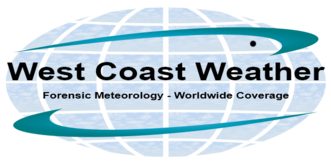Before tornadoes, there exist mesocyclones: giant, rotating columns of low-pressure air that sink below the height of their surrounding cloud basins. Sometimes subsidiary vortices called tornadoes spawn under them. The already swiftly-moving air circulating above is restrained into a smaller diameter and, due to the conservation of angular momentum, wind speed is increased. If the
Read More
Frontal squall lines form just ahead of surface cold fronts and dry lines, and also ahead of upper-level fronts. If the necessary conditions exist, they may stretch to hundreds of miles in length. They may bring tornadoes and hail but they’re more commonly associated with strong straight-line winds. If the flow along a squall line
Read More
Hook echoes are meteorological phenomena named after their shapes. They’re created when vertical wind shear causes warm, moist air, sucked in by the unstable movements of a supercell thunderstorm, to mix with a different incoming channel of drier, cooler air. The shape they assume resembles a hook because the two streams of air aren’t mixing
Read More
Lenticular cloud formation (like photo above) are photo gems that we love to view. However, if you are in an airplane you probably want to avoid. These clouds can be found quite often in the mountain areas of Western US. They usually form when we have strong westerly winds aloft. The danger is in Rotor
Read More
ENSO (water temperatures near equator) signal can impact the Winter weather especially in the United States. This link is to the International Research Institute for Climate and Society. A great think tank. Outlook for this coming winter 2013-2014 is for Neutral conditions. Thus, many areas will have normal temperatures and rain (snow).
Read More
This is always a great web site for up to date severe weather conditions in the United States, Storm Prediction Center (NOAA) http://www.spc.noaa.gov/
Read More
There are times that we just need to take a quick look at some historic weather data in an aircraft crash incident and it is good to take a look at some web sites. One of the better sites to get weather maps is this free site http://www.hpc.ncep.noaa.gov/dailywxmap/ which contains maps for the US and Cananda.
Read More
Please go to this site to review one of our sample forensic reports on an aviation accident . These are the type of reports that we prepare prior to a case going to court. http://www.aviationweatherlaw.com/sample_report.pdf
Read More
The location of the jet stream varies greatly during the year. However during the winter in the northern hemisphere the polar jet is generally located near 40 to 50 degrees latitudes north and found at elevations at 30,000 to 40,000 feet. Wind speeds vary but can be into 150 to 200 mph range and the
Read More
This is a great link for current aviation weather conditions in the US. It is a site from the National Weather Service http://aviationweather.gov/ There is also data here covering: Convection, turbulence, icing, to name a few.
Read More
